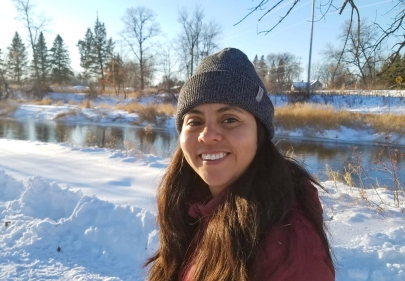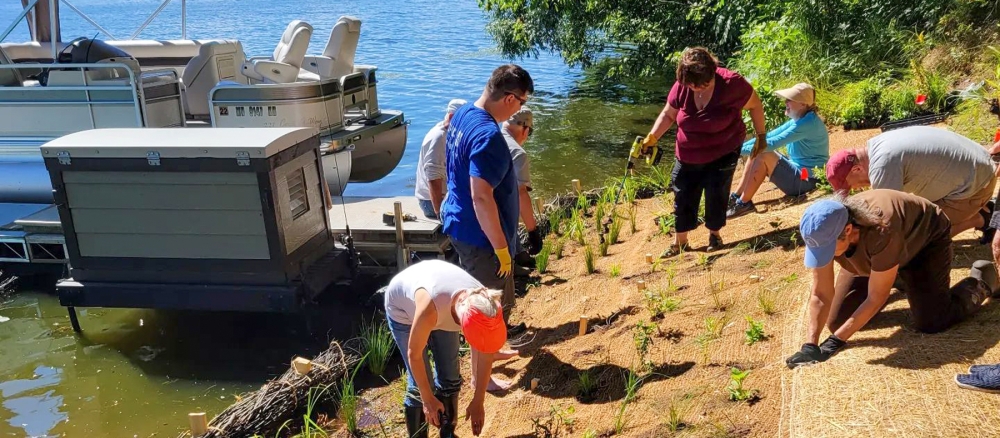Before Laura Mendoza Romero got involved with shoreline restoration, she remembers going on boat rides and seeing all the different landscapes along the shore. Some houses you could barely see because they were so many trees along the shoreline and others were all grass. “And I wondered how these differences were affecting the lake and the life around the lake,” she says.
Mendoza moved from Mexico about five years ago. “What I did in Mexico was urban agriculture. It was not only about growing food in the city, but also about teaching people the importance of having a more responsible use of water. When I moved to Minnesota, I wanted to do something kind of similar, but also adapted to the needs of the area.”

Now, Mendoza works as a shoreline restoration consultant for Great Roots (Aitkin, Minn.), combining two of her favorite things: plants and people. “I present a plan to the people that fits their needs and wants. And then they get their family, friends, neighbors, and lake association members to help plant and install all the plants. I bring all the materials and the plan and we get it done.”
“I really enjoy doing it with people because then they feel more connected to it, and understand better the ‘whys,’ and how to maintain it, too. It's a fun day.” A year or two after a project is installed, Mendoza hears from people that they are seeing more butterflies and different bees.
For Mendoza, the heart of all this work is having a better connection with nature. “It's cool to have a lake house, but it's even cooler if you can interact with the biodiversity that was already there in a more friendly way.”
Photo above: A Great Roots shoreline restoration project in September 2022. Credit: Great Roots.
Visit the exhibit
Mendoza shared her story as a part of We Are Water MN, a traveling exhibit and community engagement program that explores Minnesotans’ relationships with water. Happy Dancing Turtle, a nonprofit in Pine River is hosting the exhibit and related programming this spring.
In the Pine River watershed, abundant forest land protects water and wildlife: Lakes and streams are largely meeting water quality standards. More than 100 unique, rare, endangered, or threatened species are found there, including wild rice, golden-winged warblers, northern long-eared bats, and Blanding’s turtles. People who live in and visit the watershed can make choices that protect, in Mendoza’s words, “this really beautiful place.”
Visit the exhibit to hear local stories and learn about more about the Pine River watershed, April 27 through June 19 at the Hunt Utilities Group Resilient Living Campus, 2331 Dancing Wind Road SW, Pine River. The exhibit is open Monday, 10 a.m. to 6 p.m., Wednesday and Friday 10 a.m. to 4 p.m. and Saturday 10 a.m. to 2 p.m. Admission is free.
Find exhibit and event details on the Happy Dancing Turtle website. Several events are planned in conjunction with the exhibit, including:
- a water photo contest.
- well-water nitrate testing clinic, May 13.
- school and group visits by appointment.
About We Are Water MN
We are Water MN is led by the Minnesota Humanities Center in partnership with the Minnesota Pollution Control Agency; the Minnesota Historical Society; the Board of Water and Soil Resources; the Minnesota Departments of Agriculture, Health, and Natural Resources; and University of Minnesota Extension.
The program is funded in part with money from the Clean Water, Land & Legacy Fund — which was created with the vote of the people of Minnesota on November 4, 2008 — and by the National Endowment for the Humanities.
